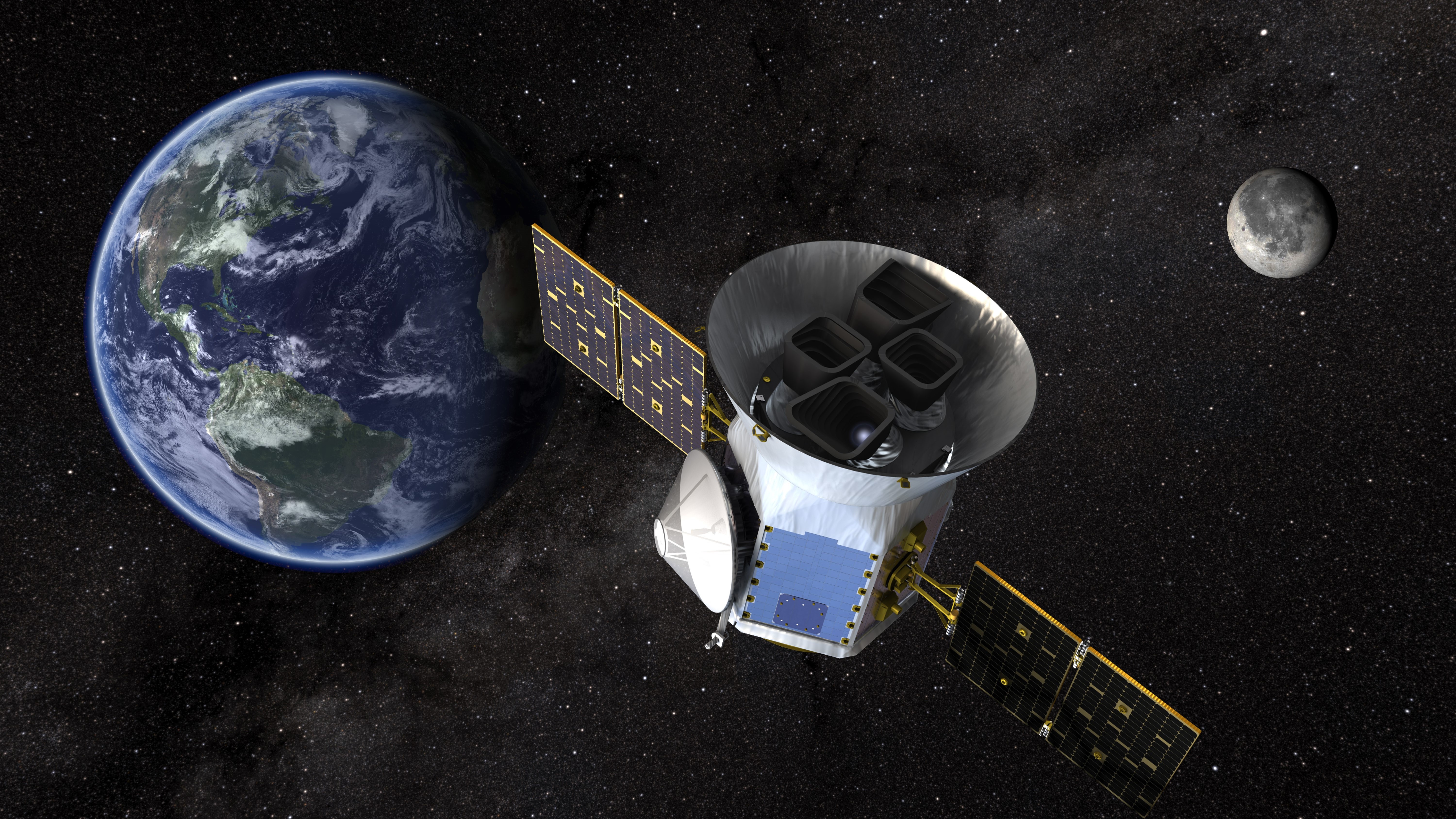
NASA's next planet-hunting mission will take a census of Earth's cosmic neighborhood.
The Transiting Exoplanet Survey Satellite(TESS), which is scheduled to launch to Earth orbit in 2017 or 2018, will observe at least 200,000 relatively nearby stars during its two-year mission, and it should end up finding thousands of alien worlds, NASA officials said.
"The cool thing about TESS is that, one of these days, I'll be able to go out in the country with my daughter and point to a star and say, 'There's a planet around that one,'" TESS project scientist Stephen Rinehart, of NASA's Goddard Space Flight Center in Greenbelt, Maryland, said in a statement. [Gallery: The Strangest Alien Planets]
That's noteworthy, because most of the 3,400-odd exoplanets discovered to date lie thousands of light-years away, in the tiny patch of sky studied by NASA's Kepler space telescopeduring its initial planet hunt from 2009 through 2013. (Kepler is still searching for alien worlds, but on a more limited basis as part of a new mission called K2.)
TESS, by contrast, will observe stars located within a few hundred light-years from Earth, in all parts of the sky, NASA officials said. One of the major goals is to find potentially habitable worlds close enough for follow-up investigation by NASA's James Webb Space Telescope(JWST), which is scheduled to launch in late 2018.
The $8.8 billion JWST, which is billed as the successor to NASA's famous Hubble Space Telescope, will be able to search for oxygen and other possible "biosignature" gases in nearby exoplanets' atmospheres, agency officials have said.
Like Kepler, TESS will hunt for alien worlds via the "transit method," searching for the tiny brightness dips that planets cause when they cross, or transit, the faces of their host stars.
Get the Space.com Newsletter
Breaking space news, the latest updates on rocket launches, skywatching events and more!

Based on the nature of these dips, TESS scientists will be able to tell how big the newly discovered exoplanets are, and how long they take to orbit their parent stars. Other information about these worlds could conceivably be gleaned by JWST or powerful ground-based instruments, NASA officials said.
TESS will cover most of the sky during its two-year mission, by studying 26 different swathes known as "tiles."
"The spacecraft's powerful cameras will look continuously at each tile for just over 27 days, measuring visible light from the brightest targets every 2 minutes," NASA officials said in the same statement.
"TESS will look at stars classified as 12th apparent magnitude and brighter, some of which are visible to the naked eye," the officials added. "The higher the apparent magnitude, the fainter the star. For comparison, most people can see stars as faint as sixth magnitude in a clear, dark sky, and the faintest star in the Big Dipper ranks as third magnitude."
Though TESS will be a planet hunter first and foremost, the satellite will also observe black holes, supernovas, and a variety of other cosmic objects and phenomena via a "guest investigator" program.
"We hope the broader science community will come up with many unique science ideas for TESS, and we hope to encourage broad participation from the larger community," said Padi Boyd, director of the Guest Investigator Program Office at NASA Goddard.
Follow Mike Wall on Twitter @michaeldwall and Google+. Follow us @Spacedotcom, Facebook or Google+. Originally published on Space.com.
Join our Space Forums to keep talking space on the latest missions, night sky and more! And if you have a news tip, correction or comment, let us know at: community@space.com.

Michael Wall is a Senior Space Writer with Space.com and joined the team in 2010. He primarily covers exoplanets, spaceflight and military space, but has been known to dabble in the space art beat. His book about the search for alien life, "Out There," was published on Nov. 13, 2018. Before becoming a science writer, Michael worked as a herpetologist and wildlife biologist. He has a Ph.D. in evolutionary biology from the University of Sydney, Australia, a bachelor's degree from the University of Arizona, and a graduate certificate in science writing from the University of California, Santa Cruz. To find out what his latest project is, you can follow Michael on Twitter.









